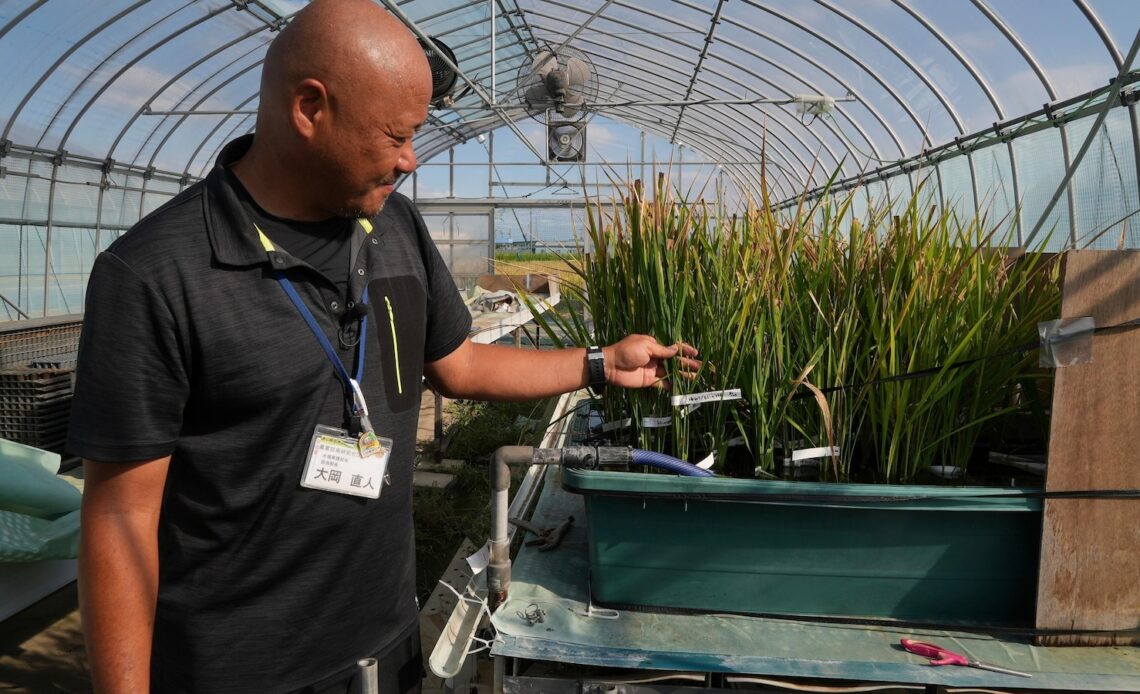KAMIMOMI, Japan — In the remote village of Kamimomi in Japan’s western Okayama prefecture, a small group of rice farmers began their most recent harvest in sweltering heat, two weeks sooner than usual.
The prefecture is called “the Land of Sunshine” because of its pleasant climate, but farmers working among the paddy fields and ancient rice terraces say that climate change is hurting the harvest of rice, long a cornerstone of Japan’s diet.
“Last year, an exceptional heat wave took the water out of the rice, which became small and thin,” rice farmer Joji Terasaka said. “So I am worried about that this year because it will be just as hot.”
This year Japan experienced its hottest July on record, with temperatures reaching 2.16 C (3.9 F) higher than average, according to the Japan Meteorological Agency. The globe has seen a 1.2 C (2.2 F) rise in average temperature since preindustrial times, and scientists agree that warming needs to be capped at 1.5 C (2.7 F) to stave off the worst effects of climate change. That includes even more powerful heat, storms and irreversible ice melt.
Last year, Japan recorded a poor rice harvest nationwide because of exceptionally hot weather. Ministry data showed the country’s private-sector rice inventory fell to 1.56 million tons in June, the lowest level since records began in 1999. Last year was the hottest on record globally, though it’s feared that this year may top it.
The drop in harvest in Japan was partly to blame for this year’s widespread summer rice shortage, according to officials. There were empty shelves in supermarkets, and some retailers are still enforcing purchase limits of one rice bag per customer.
“Perhaps people think that an increase of one degree Celsius in average temperature isn’t much. But it’s quite a big change for plants and crops,” says Yuji Masutomi, a researcher at the National Institute for Environmental Studies in Tsukuba, north of Tokyo.
Masutomi said the rising temperatures not only influence the growth cycle and yield of rice, but also hurt the quality of the grain.
When temperatures rise above 27 C, the buildup of starch inside rice grains is reduced. That causes the crop to take on a chalky appearance, and its value is reduced.
At least a fifth of rice farms have reported a drop in quality from rising temperatures, according to a farming ministry report last year.
“Not only is the appearance not good; people say the taste drops too,” Masutomi said.
For farmers…
Click Here to Read the Full Original Article at ABC News: Business…

